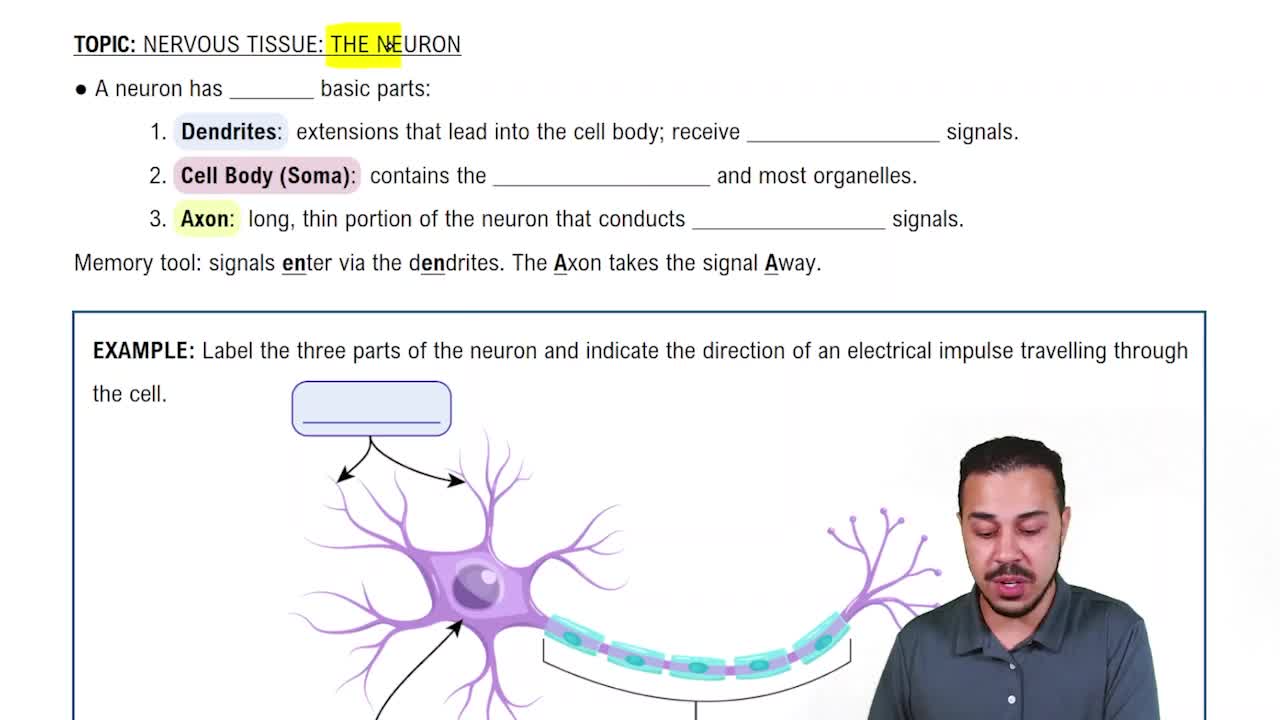Here are the essential concepts you must grasp in order to answer the question correctly.
Unipolar Neurons
Unipolar neurons have a single process extending from the cell body, which branches into two parts: one that acts as a dendrite and the other as an axon. This structure allows for the rapid transmission of sensory information, making them primarily found in sensory ganglia of the peripheral nervous system, such as those associated with touch and pain.
Recommended video:
Bipolar Neurons
Bipolar neurons possess two distinct processes: one dendrite and one axon, both extending from opposite ends of the cell body. This configuration is crucial for sensory functions, particularly in the retina of the eye and the olfactory epithelium, where they facilitate the transmission of sensory signals to the central nervous system.
Recommended video:
Multipolar Neurons
Multipolar neurons are characterized by having one axon and multiple dendrites, allowing for the integration of a large amount of information from various sources. They are the most common type of neuron in the central nervous system, found in areas such as the brain and spinal cord, where they play key roles in motor control and complex processing.
Recommended video:


